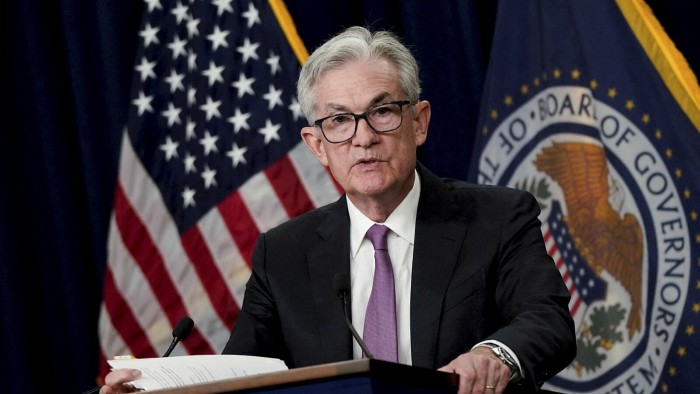Fed officials signal restrictive rates may be needed ‘for some time’

Roula Khalaf, Editor of the FT, selects her favourite stories in this weekly newsletter.
Federal Reserve officials discussed the need to keep interest rates at levels that will restrict the US economy “for some time” in a bid to contain the highest inflation in roughly 40 years, according to an account of their most recent meeting.
Minutes from the meeting in July, when the US central bank raised its benchmark policy rate 0.75 percentage points for the second month in a row, signalled that policymakers were intent on pressing ahead with tightening monetary policy but aware of the risks of overdoing it.
Given the enormity of the inflation problem and “upside risks” to the outlook for price growth, officials supported raising interest rates to the point where they act as a drag on economic growth.
Raising rates to such a level would allow the Fed to increase them even “further, to appropriately restrictive levels, if inflation were to run higher than expected”, the minutes noted.
Some officials indicated that once rates had been raised to the point where they were cooling down the economy “sufficiently”, it would probably “be appropriate to maintain that level to ensure that inflation was firmly on a path back” to the Fed’s target of 2 per cent.
Officials emphasised that the “bulk” of the effect of rate rises had not yet been significantly felt, according to the minutes, with price pressures showing little sign of improvement. That is likely to mean inflation will stay “uncomfortably high for some time”, but also that the Fed may change tack in the next phase of its rate-rising cycle.
“The story of lags was the story of the minutes,” said Andy Schneider, US economist at BNP Paribas. “The upshot is that they are going to assess more and be more cautious going forward as they do.”
After July’s rate rise, the Fed is in the throes of its most aggressive cycle of monetary tightening since 1981. The rate increase was implemented just a day before data showed the US economy contracted for a second consecutive quarter, a common marker of a recession.
In just four months, it has raised its benchmark policy rate from near zero to a target range of 2.25 per cent to 2.5 per cent.
At this level, the federal funds rate is in line with most officials’ estimates of a “neutral” policy setting for when inflation is running at 2 per cent, meaning that it neither stimulates nor restrains economic activity.
Top officials are actively debating whether a third successive 0.75 percentage point rate rise at the next policy meeting in September is needed or if the Fed can start implementing smaller increases.
The minutes echoed the point raised by Fed chair Jay Powell at the press conference following July’s announcement, when he said that as the central bank continues to tighten monetary policy, “it likely will become appropriate to slow the pace of increases”.
Financial markets seized on the comment at the time — even though Powell did not rule out “another unusually large increase” in September — and US stocks and other risky assets rallied sharply.
The market rally has gathered steam in recent weeks, easing financial conditions for consumers and companies and counteracting some of the effects of the tightening implemented by the Fed.
Following the release of the minutes on Wednesday, Treasury yields dipped and stocks rose as investors interpreted policymakers’ comments as dovish. Expectations of where the Fed’s benchmark interest rate will stand at the end of the year dipped slightly from 3.6 per cent to about 3.5 per cent.
Some members of the Federal Open Market Committee and other Fed presidents have pushed back on the notion that the central bank will rein in its aggressive approach, instead emphasising their commitment to pushing rates well into restrictive territory. But the emphasis in the minutes on the risks posed by overly aggressive tightening countered that rhetoric.
The varied tone also suggested a “lack of commitment to restoring price stability”, said Tim Duy, chief US economist at SGH Macro Advisors. “It raises the risk that they will not see the fight for price stability all the way through.”
Still, the minutes suggested Fed officials were increasingly of the view that there might need to be job losses and an economic downturn to stamp out inflation, with a “moderate” increase in unemployment from the current, historically low level of 3.5 per cent.
In an interview with the Financial Times last week, San Francisco Fed president Mary Daly said the central bank was “not near done yet” in its fight against inflation. She added that it will need to see clear evidence that consumer price growth was slowing substantially before it considered any let-up in the rate-rising cycle.
According to the latest inflation data, there was no increase in consumer price growth between June and July and a slower annual rate of 8.5 per cent. That followed a surprisingly strong jobs report the previous week, which showed that the US economy added 528,000 positions in July.
Daly said she is inclined to support a half-point rate rise next month but was “open-minded” about another 0.75 percentage point adjustment.
Comments